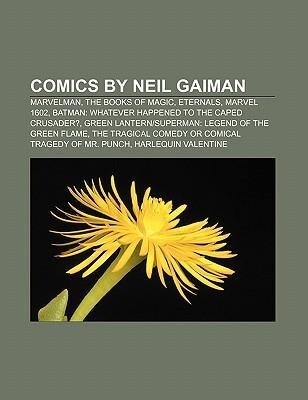
Zustellung: Do, 02.01. - Mo, 06.01.25
Versand in 3 Tagen
VersandkostenfreiBestellen & in Filiale abholen:
Source: Wikipedia. Pages: 27. Chapters: Marvelman, The Books of Magic, Eternals, Marvel 1602, Batman: Whatever Happened to the Caped Crusader?, Green Lantern/Superman: Legend of the Green Flame, The Tragical Comedy or Comical Tragedy of Mr. Punch, Harlequin Valentine, Creatures of the Night, Violent Cases, Neil Gaiman's Midnight Days, Lady Justice, Neil Gaiman's Only the End of the World Again, Signal to Noise, Sandman Midnight Theatre. Excerpt: The Books of Magic is a four-issue English-language comic book mini-series written by Neil Gaiman, published by DC Comics, and later an ongoing series under the imprint Vertigo. Since its original publication, the mini-series has also been published in a single-volume collection under the Vertigo imprint with an introduction by author Roger Zelazny. It tells the story of a young boy who has the potential to become the world's greatest magician. The Books of Magic began life when DC Comics decided to highlight some of their mystical characters across the range. They initially approached writer J. M. DeMatteis to script a prose book with illustrations from Jon J Muth, Kent Williams, Dave McKean and others, but when it reached the stage of confirming the artists' involvement, the suggested artists all declined to be involved. At that stage, DeMatteis also decided to step back, and DC instead approached popular writer Neil Gaiman and asked him to come up with a four-issue prestige-format series "about our magic characters". Drawing on a childhood spent working his way through the children's section in his local library and a childhood love of magic and fantasy stories such as T. H. White's The Once and Future King, Gaiman created an everyman character of a twelve-year-old boy called Timothy Hunter, who would need to be given an extensive tour of the DC magical universe before being able to decide if he should embrace or reject his destiny as the world's greatest magician. Gaiman used the four issues to formally split the structure of the story, and allow for a different artist to draw each issue: This structure allowed Gaiman great scope to include various magical characters from across DC's ranges, as well as reintroducing characters that weren't currently in print. In his introduction to the collected edition, author Roger Zelazny also noted that the structure bore some similarity to the key story points of the mythic structure identified by Campbell's The Hero with a
Produktdetails
Erscheinungsdatum
10. Dezember 2019
Sprache
englisch
Seitenanzahl
28
Herausgegeben von
Source: Wikipedia
Verlag/Hersteller
Produktart
kartoniert
Gewicht
78 g
Größe (L/B/H)
246/189/3 mm
Sonstiges
Paperback
ISBN
9781156117286
Entdecken Sie mehr
Bewertungen
0 Bewertungen
Es wurden noch keine Bewertungen abgegeben. Schreiben Sie die erste Bewertung zu "Comics by Neil Gaiman" und helfen Sie damit anderen bei der Kaufentscheidung.









